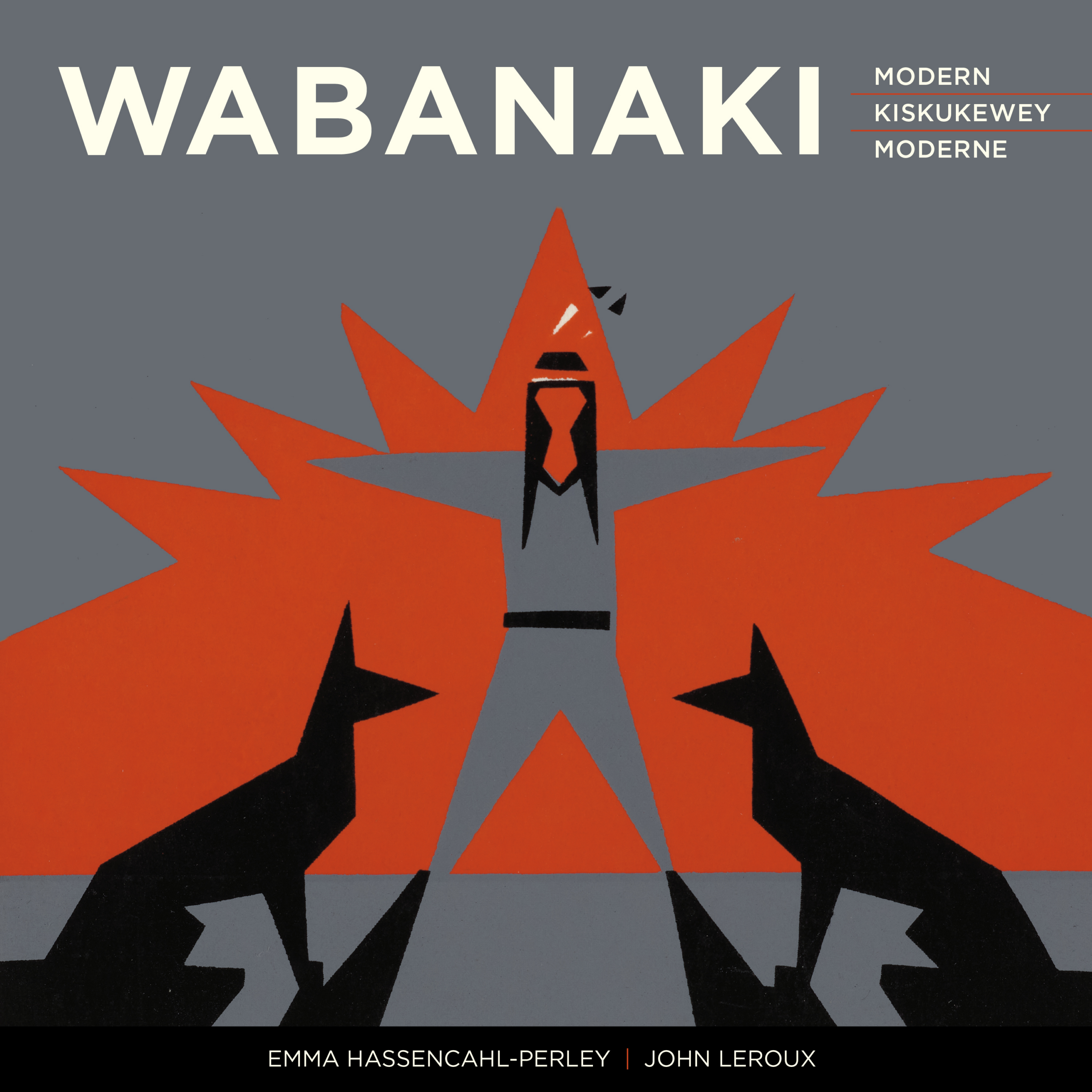Your cart is currently empty!
Important Shipping Notice: Due to the ongoing Canada Post strike, delivery times may be longer than usual. Where possible, we’ll use alternative shipping methods to help get your order to you sooner. We appreciate your patience and understanding as your order makes its way to you.
A note to US-based customers: All Lit Up is pausing print orders to the USA until further notice. Read more
Wabanaki Modern | Wabanaki Kiskukewey | Wabanaki Moderne
Winner, Canadian Museums Association Award for Outstanding Achievement (Research) and APMA Best Atlantic-Published Book Award
Longlisted, First Nation Communities READ Award
The story of an overlooked group of cultural visionaries
The “Micmac Indian Craftsmen” of Elsipogtog (then known as Big Cove) rose to national prominence in the early 1960s. At their peak, they were featured in print media from coast to coast, their work was included in books and exhibitions — including at Expo 67 — and their designs were featured on prints, silkscreened notecards, jewelry, tapestries, and even English porcelain.
Primarily self-taught and deeply rooted in their community, they were among the first modern Indigenous artists in Atlantic Canada. Inspired by traditional Wabanaki stories, they produced an eclectic range of handmade objects that were sophisticated, profound, and eloquent.
By 1966, the withdrawal of government support compromised the Craftsmen’s resources, production soon ceased, and their work faded from memory. Now, for the first time, the story of this groundbreaking co-operative and their art is told in full. Accompanying a major exhibition at the Beaverbrook Art Gallery opening in 2022, Wabanaki Modern features essays on the history of this vibrant art workshop, archival photographs of the artisans, and stunning full-colour images of their art.
Wla atukuaqn na ujit ta’nik mu ewi’tamuki’k tetuji kelulkɨpp ta’n teli amaliteka’tijik
Wla “Mi’kmewaqq L’nue’k amaliteka’tijik” tlo’ltijik Elsipogtog (amskweseweyekk i’tlui’tasikɨpp Big Cove) poqji wuli nenupnikk wla amaliteka’tijik 1960ekk. Je wekaw wutlukowaqnmuwow ika’tasikɨpp wikatikniktuk aqq ne’yo’tasikɨpp ta’n pukwelk ta’n wen nmitew — je wekaw Expo 67 — aqq ta’n koqoey kisi napui’kmi’tipp tampasɨk koqoey eweketu’tij stike’ l’taqnewi’kasik, napui’kn misekn, wi’katikne’ji’jk, meko’tikl kuntal, kaqapitkl l’taqa’teke’l, aqq wekaw akalasie’we’k eptaqnk. Nekmow na kekina’masultijik aqq melki knukwi’tij ta’n tett telayawultijik, nekmow na amskewsewa’jewaqq l’nu’k tel nenujik ujit ta’n teli amaliteka’tijik ujit Atlantic Canada. Pema’lkwi’titl a’tukuaqnn ta’n sa’qewe’l, ta’n wejiaqel a’tukuaqnn Wabanaki, l’tu’tipp kaqasi milamu’k koqowey toqo eweketu’titl wutpitnual tetuji moqɨtekl, ma’muntekl, aqq weltekl.
Wekaw 1966ekk, kpno’l pun apoqnmuapni wla amaliteka’tikete’jɨk jel kaqnma’tijik ta’n koqoey nuta’tipp, amuj pana pun lukutipnikk, aqq tel awantasuwalutki’k. Nike’, amskwesewey, wla a’tukuaqn tetuji msɨki’kɨpp wla wut lukewaqnmuwow etel kaqi a’tukwasikk. Wije’tew meski’k neya’tmk Beaverbrook Art Gallery pana’siktetew 2022al, Wabanaki Modern na pema’toql wikikaqnn ujit ta’n pemiaqɨpp wla tetuji wulamu’kɨpp kisitaqnne’l telukutijik, maskutekl sa’qewe’l napuikasikl toqo nemu’jik etl-lukutijik wla lukewinu’k, aqq sikte wultek aqq welamu’k ta’n koqoey kisitu’tij.
L’histoire d’un groupe de visionnaires culturels ignorés
Un groupe d’artisans mi’kmaw d’Elsipogtog (autrefois Big Cove) au Nouveau-Brunswick se fit connaître à travers le Canada au début des années 1960. À l’apogée de leur renommée, les Micmac Indian Craftsmen firent l’objet d’articles dans des publications d’un océan à l’autre. Leur travail figura dans des livres et des expositions — dont Expo 67 à Montréal — et leurs œuvres graphiques furent reproduites sous forme de gravures et de sérigraphies, et elles ornèrent de la papeterie, des bijoux, des tapisseries et même de la porcelaine anglaise.
En grande partie autodidactes et solidement enracinés dans leur communauté, les Micmac Indian Craftsmen furent parmi les premiers artistes autochtones modernes au Canada atlantique. En s’inspirant de récits traditionnels wabanakis, ils fabriquaient à la main une gamme variée d’objets raffinés, évocateurs et porteurs d’un sens profond.
En 1966, toutefois, le gouvernement retira son soutien. Les Craftsmen perdirent leur financement, la production cessa peu après et leur œuvre finit par être oubliée. Une nouvelle publication relate maintenant, pour la première fois, l’histoire complète de cette coopérative innovatrice et de ses réalisations. Publié dans le cadre d’une grande exposition qui a lieu à la Galerie d’art Beaverbrook en 2022, Wabanaki Moderne comprend des textes sur l’histoire de cet atelier dynamique, des photographies d’archives des artisans et de superbes illustrations couleur de leurs œuvres.
– Midwest Book Review
“This gorgeous book accompanies a major exhibition and documentary film of the same name, showcasing the eclectic range of modern Wabanaki art design, featured on silkscreened notecards, jewelry, tapestries, beautiful prints and English porcelain while weaving together the stories of the artists who were instrumental in establishing the modern Indigenous art movement. The production values of this timely retrospective truly impressed the jury, who all agreed it was beautiful, of historic and cultural significance and a crucial contribution to the Canadian identity.”
– APMA Best Atlantic-Published Book Award jury
You must be logged in to submit a review.
Details
Dimensions:
228 Pages
10in * 10in * 0.6875in
1231gr
Published:
October 18, 2022
Publisher:
ISBN:
9781773102665
Book Subjects:
Featured In:
Language:
eng
mic
fre
No author posts found.
